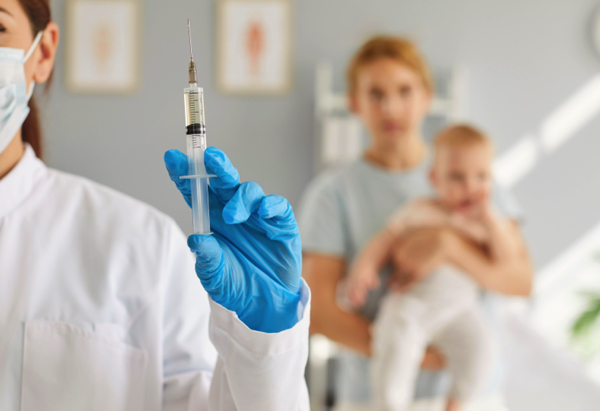CDC: U.S. births tick up in 2024, but fertility rate hits historic low
07/27/2025 / By Laura Harris

- In 2024, the U.S. saw 3.62 million births, a one percent increase from 2023, yet the fertility rate fell to a historic low of 53.8 births per 1,000 women aged 15 to 44.
- The average number of children per woman dropped below 1.6, well under the replacement rate of 2.1. Birth rates declined for women under 35 but rose slightly for those aged 40 to 44.
- President Donald Trump signed a February 2025 executive order directing federal officials to propose ways to lower IVF costs and expand access to fertility treatments.
- The administration has voiced support for financial incentives to encourage higher birth rates, framing them as part of a broader pro-family agenda.
- As part of the GOP’s One Big Beautiful Bill, new tax-advantaged savings accounts seeded with $1,000 per newborn will be created starting in 2025, with additional contributions allowed and rules to promote responsible use into adulthood.
A new Centers for Disease Control and Prevention (CDC) report has revealed that the number of babies born in the U.S. rose slightly in 2024, but the fertility rate in the country still dropped to a record low.
According to the 2024 CDC report, drawn using birth certificates and Census Bureau estimates, 3.62 million babies were born in 2024 – a one percent increase over the 3.59 million births recorded in 2023. While that marks a modest rebound, births remain well below the nation’s modern-era peak of 4.3 million in 2007 – a 16 percent decline over nearly two decades.
Yet even as more babies were born, the fertility rate, the number of births per 1,000 women aged 15 to 44, fell by one percent, to 53.8, down from 54.5 in 2023. This represents the lowest fertility rate ever recorded in the United States. (Related: CDC report: U.S. birth rate hit RECORD LOW in 2023, plummeting to 1.62 births per woman.)
That number translates to fewer than 1.6 children per woman, far below the 2.2 global average and well under the 2.1 rate generally considered necessary for a population to replace itself without immigration.
Moreover, the CDC data showed continued shifts in the age patterns of motherhood. Birth rates declined in 2024 for women in their teens, twenties and early thirties. Rates were steady for women aged 35 to 39 and rose slightly for those aged 40 to 44 – a continuation of a trend toward later parenthood.
Earlier in the year, provisional data had suggested possible upticks in birth rates for women in their late 20s and 30s, but those numbers were revised after the CDC updated its population estimates using new U.S. Census data.
Despite the increase in total births, experts warn the longer-term trend remains clear. Americans are having fewer children, and they’re having them later in life.
Trump administration pushes pro-family agenda with IVF order and baby bonuses
The Trump administration, alarmed by recent and consecutive declines in birth rates, has taken action to try to reverse the trend. In February, President Donald Trump signed an executive order that would expand access to in vitro fertilization (IVF) and ease the financial burden of fertility treatments for millions of Americans.
The directive has given the White House Domestic Policy Council 90 days to submit recommendations on how to protect IVF access and lower out-of-pocket and insurance costs for patients. The Domestic Policy Council has been expected to examine existing federal policies and identify reforms, including those that may require congressional action, to improve affordability and access.
Trump has also expressed support for “baby bonuses,” financial incentives designed to encourage couples to have more children. Tucked inside the One Big Beautiful Bill is the creation of so-called “Trump Accounts” for every newborn in America.
The accounts, formally titled “Money Accounts for Growth and Advancement,” are tax-advantaged investment vehicles modeled after retirement accounts. They will be seeded with a $1,000 contribution from the U.S. Treasury for every child born between Jan. 1, 2025 and Dec. 31, 2028.
Parents will be able to contribute up to $5,000 annually to the accounts, with up to $2,500 of that amount potentially coming tax-free from a parent’s employer. The funds must be invested in a broad stock market index fund and earnings will grow tax-deferred until withdrawn.
Families may choose to open a Trump Account at a participating financial institution, or the government will automatically enroll eligible children when tax forms are filed unless parents opt out. There are no income limits, though parents must have a valid Social Security number and be authorized to work in the United States.
However, the accounts come with guardrails to encourage responsible use. Once the account holder turns 18, they can withdraw up to half the funds for “qualified purposes” such as college tuition, vocational training, a down payment on a first home or to start a small business. Withdrawals for non-qualified uses will be taxed as ordinary income.
At age 25, the full balance becomes accessible for those same qualified uses. After the account holder turns 31, the account is closed and the remaining funds can be used for any purpose, subject to long-term capital gains tax.
Visit Depopulation.news for more similar stories.
Watch this episode of “Light Listening” discussing the reasons behind the sharp decline in U.S. births.
This video is from The Lightbulb Initiative channel on Brighteon.com.
More related stories:
DEPOPULATION: Maternity wards across America are closing down as birth rates collapse.
DEPOPULATION UNDERWAY: Fertility rate among American women drops to all-time low.
Sources include:
Submit a correction >>
Tagged Under:
big government, birth rates, births, CDC, Collapse, demographics, depopulation, Fertility, fertility rate, parenting, population collapse, reproduction, Trump administration, women's health
This article may contain statements that reflect the opinion of the author
RECENT NEWS & ARTICLES
COPYRIGHT © 2017 COLLAPSE.NEWS
All content posted on this site is protected under Free Speech. Collapse.news is not responsible for content written by contributing authors. The information on this site is provided for educational and entertainment purposes only. It is not intended as a substitute for professional advice of any kind. Collapse.news assumes no responsibility for the use or misuse of this material. All trademarks, registered trademarks and service marks mentioned on this site are the property of their respective owners.



















